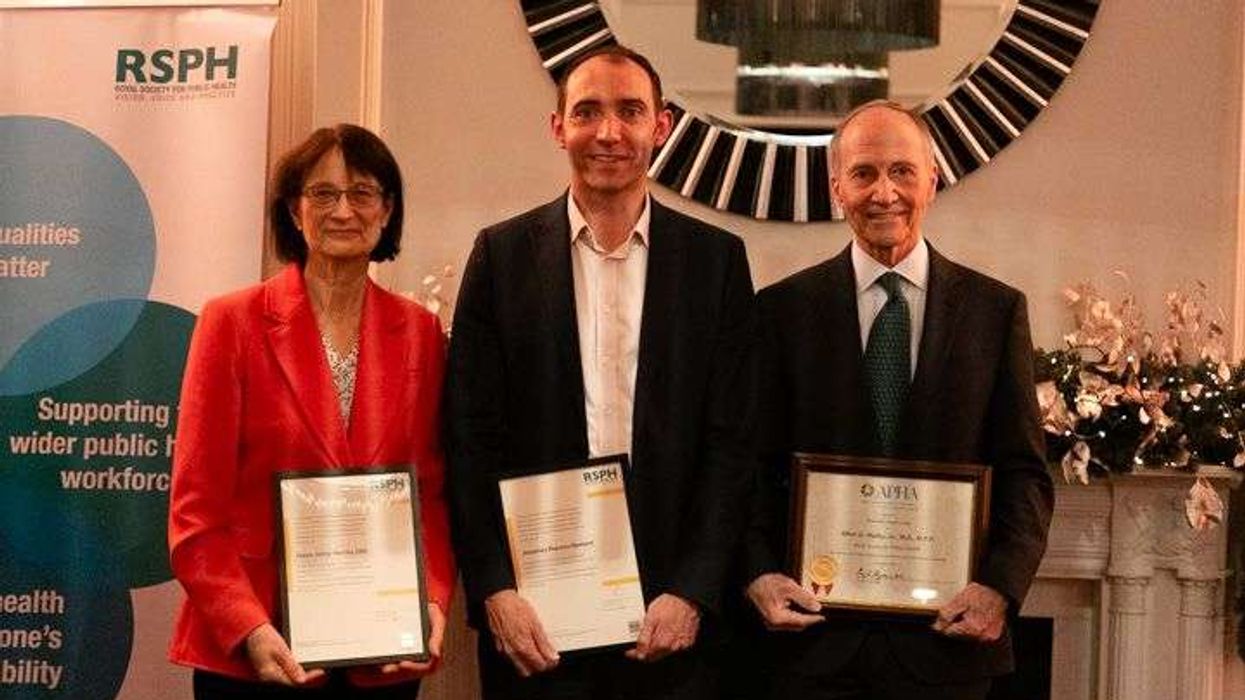By Amit Roy
What was Ramniklal Solanki really like as a man? In all the years that I have known him, I can honestly say I have never heard him raise his voice or lose his temper. He always came across as gentle.
If I had a camera to hand, I would pop into his room at work and ask him if I could take a photograph of him. Going through them now, I see I have built up quite a collection. He would sit at his desk, pen poised, marking the stories that interested him. What I loved was that his desk was piled with newspapers and magazines. There were British national newspapers, of course, but also papers from India and from America. And he would actually go through them and read the stories that he thought might be worth following. He struck me as being a newspaperman of the old school, the kind you now only see in black and white films.
If I was working on something that appealed to him, he would ask me to send him a copy, so that he could perhaps translate it into Gujarati. Looking at all the pictures I have taken of Ramnikbhai over the years, I have been trying to work out whether I have a favourite – one that sums him up as a reporter.
Once I sat down with him and asked him to tell me the tale of Rokaya Bibi from beginning to end in the minutest detail. He clearly had what journalists call a “nose for a story” and helped unravel the mystery behind the murder of a beautiful 22-year-old Muslim woman whose body was recovered from the Thames in the summer of 1971. For assisting Scotland Yard to crack the case – at some risk to himself – he received a public commendation from Sir Ian Blair, then deputy commissioner of the Metropolitan Police, in 2003.
The story seemed to have the makings of film noir to me. I made a joke which made Ramnikbhai smile: “When this is made into a movie, who is going to play you?”
Now, 50 years after the murder, I think the Rokaya Bibi case could easily be turned into a dark six-part BBC drama. What the events showed was that Ramnikbhai had the reporter’s instinct for spotting a story and also the persistence to put it together like the pieces of a jigsaw. And that was early in his career. After all, he had arrived in the UK from Gujarat in 1964 at the age of 33.
The first feature I did for The Telegraph colour magazine in the mid-seventies was about the ethnic press. I was both surprised and delighted when the magazine’s editor, John Anstey, said yes to my idea. In those days the colour magazine was the exclusive preserve of big name writers. Anyway, I think he was intrigued, as I was, that a journalist called Ramniklal Solanki had started Garavi Gujarat by handwriting the copy, and then cyclostyling the pages. Ramnikbhai told me he had launched the paper from his home in Wembley. Anstey was not entirely happy with my copy which was handed over to an American “rewrite man”. Still, I was thrilled when the piece appeared. And that is how I got to know Ramnikbhai.
As a reminder of the past, there is now a typesetting machine by the entrance to Garavi Gujarat House. It is a throwback to the days of “hot metal” production. Actually, when Ramnikbhai started his paper, he did not have access to Gujarati typesetting.
Half a century on, what is Ramnikbhai’s contribution? What is his legacy? He was so undemonstrative that it is easy to miss the scale of what he has achieved. I tend to think of Eastern Eye, which he added to his Asian Media Group stable in 2009, as not so much an “ethnic publication” but as a national newspaper – in the way the Jewish Chronicle is, for example. This is not being fanciful. When I started in Fleet Street on The Daily Telegraph, which was a remarkably liberal paper to work for despite its Tory politics, there were hardly any other Asian faces around. Now the country has changed beyond recognition – for the better in many ways.
When Ramnikbhai launched Garavi Gujarat in 1968, he could not have foreseen how his “baby” would evolve. Today, Garavi Gujarat and Eastern Eye serve at least two vital functions in my view – for which Ramnik Solanki, as editor-in-chief, should be given the credit. One is that the papers cover the countless
Asian interest stories for which there simply is no room in the mainstream press. Also, when Asian stories are covered in the latter, they tend quite often to be negative. In fact, some Asian origin journalists recruited by the nationals appear more loyal than the king and strive to dig out dirt on their own communities. It is easily done. And that is the kind of story that gets in. Garavi Gujarat and Eastern Eye seek to correct the balance and provide an “Asian voice” or an Asian perspective on the big issues of the day. This is a crucial role whose importance should not be underestimated.
Then, add the influence of the Asian Rich List, the GG2 Power List and ACTA (Arts Culture Theatre Awards), and Ramnikbhai’s influence is better understood. His papers have helped Asians gain greater confidence and a belief that they can fight prejudice and help to make Britain a better place.
One more point. Ramnikbhai was not an Asian version of, say, the late Sir David English, editor of the Daily Mail, who I can confirm was very assertive. But Ramnikbhai’s values have percolated down the generations. Though he was personally a religious man, he did not want religion to taint coverage in any way. And he wanted his papers to reflect the views of all sections of the Asian community. This is summed up in Eastern Eye’s masthead: “The Voice of British Asians.”
At a personal level, he will be greatly missed. As in the black and white movies of old, he was a newspaper man’s newspaper man. What was second nature to him was to sit, pen poised, going through the latest batch of newspapers, marking out the stories he thought were worth following.
Amit Roy is editor-at-large at Eastern Eye










